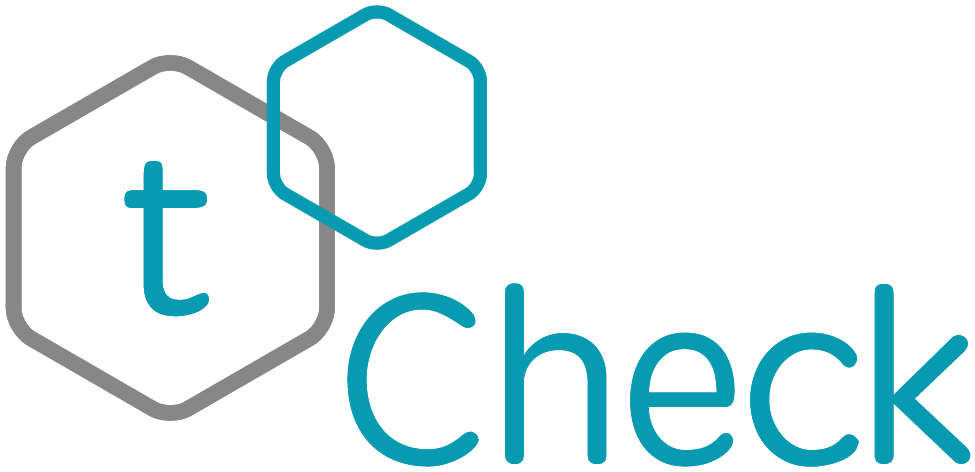tCheck has prepared this quick guide so you can be more informed about residual solvents in cannabis products and understand your risks. In this article, we’ll discuss:
- Why manufacturers use solvents to make cannabis extracts
- The types of solvents used to extract cannabinoids
- Limits for residual solvents in cannabis products
- The health consequences of solvent exposure
- How to minimize your exposure to dangerous solvents
- Testing the potency of solventless cannabis extracts
Types of Residual Solvents Found in Cannabis Products
Since cannabinoids aren’t water-soluble, it’s challenging to pull them out of raw cannabis flowers without using a solvent. Manufacturers use a range of solvents to make cannabis extractions, including butane, propane, and ethanol.The U.S. Food and Drug Administration (FDA) classifies solvents according to how much risk they present to human health and the environment. The FDA separates solvents into three classes.
Class 1 Solvents
According to the FDA, Class 1 solvents are “known human carcinogens, strongly suspected human carcinogens, and environmental hazards.” The FDA advises that Class 1 solvents be entirely avoided. Class 1 solvents include chemicals such as benzene, dichloroethanes, trichloroethane, and carbon tetrachloride.
Class 2 Solvents
The FDA recommends limiting the use of Class 2 solvents. These types of solvents have been shown to be neurotoxins, produce birth defects, or cause cancer in animals. The FDA also suspects that Class 2 solvents may present “other significant but reversible toxicities.” Class 2 solvents include hexane, toluene, and xylenes, also known as BTX.
Class 3 Solvents
The FDA considers Class 3 solvents as having low toxic potential for humans and states that “no health-based exposure limit is needed.” The FDA’s Permitted Daily Exposure (PDE) limit for Class 3 solvents is 50 milligrams or more per day, depending upon the individual substance.
For safety and regulatory reasons, cannabis concentrate manufacturers use Class 3 solvents, such as butane, propane, and ethanol. However, Class 1 or 2 solvents may show up as by-products of using Class 3 solvents. For example, chemists source butane from natural gas, which also contains more harmful substances like benzene, toluene, and xylenes.
Limits for Residual Solvents in Cannabis Extracts

Keep in mind that regulations change regularly, but this chart should give you an idea of the limits currently allowed in commercial cannabis products. You also may be interested in investigating other state regulations or the solvent limits for the Canadian cannabis industry.
| Chemical | Limit/Gram in Parts per Million (ppm) |
| Benzene | less than two ppm |
| Butane | less than 5,000 ppm |
| Heptanes | less than 5,000 ppm |
| Hexane | less than 290 ppm |
| Toluene | less than 890 ppm |
| Xylenes | less than one ppm |
Health Risks of Residual Solvent Exposure
Understanding the risks involved is a critical step for consumers to decide which cannabis products to choose. However, we still don’t have a complete understanding of the risks involved in vaping allowed quantities of residual solvents or the long-term effects of ingesting them.Researchers conduct most toxicity tests with higher quantities than you would find in typical cannabis extracts, and scientists need to study the effects of consuming residual solvents over many years to determine long-term risks. That said, here’s what we know today.
Butane Risks
Butane is one of the most popular solvents used to make cannabis concentrates, such as shatter and butter. Researchers have found that butane exposure, especially through inhalation, can damage the heart or lead to organ failure.Additionally, a 2018 case study reported that dabbing a high level of black market butane hash oil led an otherwise healthy 18-year-old girl to suffer a serious lung injury.
Ethanol Risks
Inhaling the vapors from alcohols like ethanol can lead to addiction. A 2018 study concluded that prolonged consumption of ethanol could lead to typical addiction symptoms, such as cravings, tolerance, and physical dependence.Benzene Risks
Benzene has been shown to cause cancers that affect the bone marrow, including leukemia.Hexane Risks
Found in cleaning products, hexane can contaminate concentrates during the routine cleaning of extraction equipment. Too much hexane exposure can lead to irritation of themucus membranes and issues involving the central nervous system.Toulene Risks
Toulene has been shown to damage the liver and nervous system as well as causing mitochondrial uncoupling.Risk of Exposure to Xylenes
Exposure to xylene vapor has repercussions in several bodily systems, including the digestive system, nervous system, respiratory tract, and circulatory system.
What You Can Do to Lower Your Risk with Cannabis Concentrates
Avoid Black Market Products
It’s critical to avoid purchasing and consuming cannabis extracts sold on the illegal market. Amateurs typically make these products without the specialized equipment needed to create a safe and high-quality extract. Furthermore, black market products are not lab-tested or subject to compliance protocols for safety.Buy Products Made by Carbon Dioxide Extraction
As extraction technology progresses, many companies are switching to carbon dioxide extractions, which present less of a problem than traditional solvents.
Vape Dry Herb
Consuming raw cannabis flowers instead of concentrates eliminates the risk of residual solvent exposure. If you buy your buds on the legal market, you’ll also avoid contaminants like mold, pesticides, and heavy metals.
Choose Solventless Concentrates
Solventless concentrates like bubble hash and rosin allow consumers to enjoy a stronger smoking or vaping experience without worrying about any leftover solvents. You may even want to try making them at home. All you’ll need is some relatively inexpensive equipment and a bit of practice. You can use tCheck’s Potency Testing Plus Kit to monitor the potency of your homemade solventless concentrates and improve your methods.
Stay tuned to our blog for more useful articles about cannabis extractions. If you would like more information about tCheck’s line of cannabis potency devices, please contact us.






